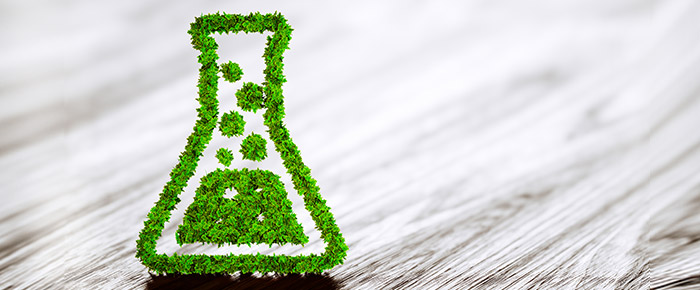 There are various ways labs can improve their operations, increase inventory management reliability, reduce costs, and help ensure their experiments’ reproducibility. Improving your lab’s sustainability and energy efficiency can impact the integrity and quality of samples and the data you generate. Here are ways to manage sustainability and energy consumption.
There are various ways labs can improve their operations, increase inventory management reliability, reduce costs, and help ensure their experiments’ reproducibility. Improving your lab’s sustainability and energy efficiency can impact the integrity and quality of samples and the data you generate. Here are ways to manage sustainability and energy consumption.
Freezer management
The first step in improving your lab’s overall sustainability is to ensure you have an up-to-date inventory of samples and reagents. This will allow you to plan your upcoming experiments better and ensure assays aren’t delayed due to missing or expired reagents and help you maintain your samples’ quality and integrity for longer. With so many samples requiring cryogenic storage, an excellent place to start is with better freezer management.
With freezer doors being opened and closed countless times each day, frost can quickly build-up inside most freezers, making samples hard to find and sometimes even difficult to access. Hence, defrosting freezers and creating or updating sample inventories regularly is imperative. This will prolong the integrity of stored samples while also reducing energy costs associated with freezer maintenance.
The process of defrosting and cleaning out your freezer is the perfect opportunity to update your inventory and discard unneeded or unwanted samples. This will clear up valuable space in the freezer for more useful samples and make them easier to access. This task can also be used to assess your lab’s cold storage needs and current setup. Your laboratory’s available cold storage capacity should be evaluated regularly. If your budget permits, old cold storage units should be retired and replaced with newer, more energy-efficient models. Improved identification and tracking methods can also be put into place by implementing the latest labeling solutions.
Once your freezer management system is in place, the next step is to identify cryogenically stored samples, including those stored in liquid nitrogen tanks, with cryogenic labels, ideally printed with barcodes for enhanced tracking. Clearly labeled vials and tubes can reduce handling errors and make tracking easier. This reduces search time and limits how long the freezer needs to stay open. For optimal sample tracking, all specimens should be added to an inventory management system, like a laboratory information management system (LIMS) that records the sample’s exact location, down to the rack, box, column, and row. Moreover, if during the process you find tubes or vials that are either unlabeled or misidentified, you should label them before putting them back into storage. In cases where the samples cannot be thawed first, cryogenic labels that will adhere to already frozen surfaces are available, allowing the vials to be accurately identified without jeopardizing the integrity of the contents. These labels are available in a “blackout” version that can be applied directly over an existing label, concealing obsolete or inaccurate information.
Energy efficiency
Improving energy efficiency has a positive impact on lab sustainability. Research laboratories can consume a staggering amount of energy, widely recognized as one of the highest energy users per surface area. However, there are various ways to limit overall energy use, and as a result, reduce your energy costs. With research budgets as constrained as they are, small savings can quickly add up to substantial amounts for any lab.
The largest consumer of energy in most buildings is the heating, ventilation, and air conditioning system (HVAC). This is especially true for labs set up in old academic research facilities that may rely on outdated HVAC systems. Newer, more sophisticated systems can be programmed around a lab’s typical work schedule. This allows them to operate at the minimum rate during off-hours while at full or near full capacity during working hours. They can also be adjusted in real-time in response to contaminants or decreased overall indoor air quality. This not only reduces costs but can also improve lab safety and compliance. As such, when funds do become available to upgrade or update any facility, the HVAC system should be one of the first systems identified as a cost-effective, energy-efficient option. In line with the HVAC system, your fume hood is also a prime target for improving your lab’s energy efficiency. Here are two simple tips for reducing your fume hood’s energy use. The last person in the lab should close the sash before leaving, so the hood isn’t exchanging air with the rest of the lab all night. Also, most hoods are equipped with a decontamination UV light that may be turned on overnight. Ensure this is set on a timer to turn off after around 30 minutes. This should be more than enough to sterilize the fume hood for use the next day.
In addition, there are a few other simple measures you can implement to reduce your lab’s energy use. This includes turning off the lights at the end of the day and unplugging superfluous equipment when not in use. You can also reduce the use of dishwashers and autoclaves to only when they become full and put them in standby mode when not in use. Finally, properly maintaining your cold storage systems, as detailed above, will also reduce energy consumption. Experts in energy efficiency also recommend setting your -80°C freezers to -70°C. This has been observed to reduce energy consumption by up to 30% while still maintaining adequate cryogenic storage conditions1.
Safety & sustainability
Sustainability and safety are closely related and vital to every laboratory. Most labs handle various dangerous chemicals and biological agents daily. To ensure your lab remains in proper operation, those chemicals must be handled according to proper guidelines and standard operating procedures (SOPs), with clear signage advising staff of the potential risks. This entails the use of laboratory safety labels, such as GHS and NFPA laboratory labels. Hazardous chemicals should also be stored in safety cabinets. For potential harmful biological specimens, biological safety cabinets are also available.
Moreover, safety material and essential equipment should be routinely inspected and calibrated. This includes your fume hood, which should be certified annually. Calibration labels can be used to help indicate what equipment has been recently inspected and to note the necessary recalibration date. The storage of chemicals must also be reviewed to ensure incompatible chemicals are properly separated and secondary containers are used where appropriate. The use of green chemistry alternatives can also improve your lab’s sustainability while also offering a safer eco-friendly option that reduces employee exposure to harmful solvents. As an example, Histology professionals have adopted safer clearing and deparaffinizing xylene substitutes such as Clearify™, Histo-Clear™, and Pro-Par. These xylene alternatives offer a non-toxic and biodegradable option that can also reduce disposal costs.
LabTAG by GA International is a leading manufacturer of high-performance specialty labels and a supplier of identification solutions used in research and medical labs as well as healthcare institutions.
References:
- A. Espinel-Ingroff, D. Montero, and E. Martin-Mazuelos. Long-Term Preservation of Fungal Isolates in Commercially Prepared Cryogenic Microbank Vials. J Clin Microbiol. 2004 Mar;42(3):1257-9.




